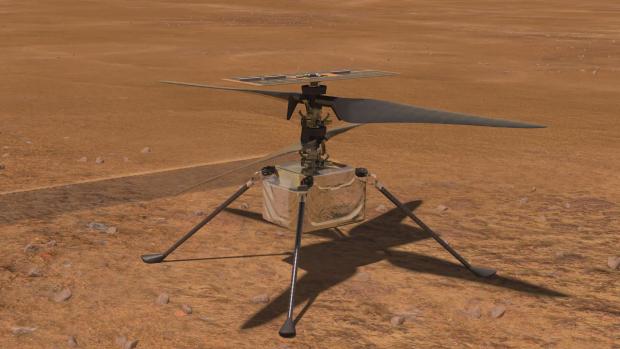
Breaking News
 The Fed's Pivot: The Return of Easy Money and the Inflation Storm Ahead
The Fed's Pivot: The Return of Easy Money and the Inflation Storm Ahead
 This One-Person eVTOL Will Soon Offer Bird's-eye Views of Las Vegas
This One-Person eVTOL Will Soon Offer Bird's-eye Views of Las Vegas
 Emergency Update: Steve Slepcevic Reports Live on Hurricane Melissa's Devastation in Jamaica
Emergency Update: Steve Slepcevic Reports Live on Hurricane Melissa's Devastation in Jamaica
Top Tech News
 Graphene Dream Becomes a Reality as Miracle Material Enters Production for Better Chips, Batteries
Graphene Dream Becomes a Reality as Miracle Material Enters Production for Better Chips, Batteries
 Virtual Fencing May Allow Thousands More Cattle to Be Ranched on Land Rather Than in Barns
Virtual Fencing May Allow Thousands More Cattle to Be Ranched on Land Rather Than in Barns
 Prominent Personalities Sign Letter Seeking Ban On 'Development Of Superintelligence'
Prominent Personalities Sign Letter Seeking Ban On 'Development Of Superintelligence'
 Why 'Mirror Life' Is Causing Some Genetic Scientists To Freak Out
Why 'Mirror Life' Is Causing Some Genetic Scientists To Freak Out
 Retina e-paper promises screens 'visually indistinguishable from reality'
Retina e-paper promises screens 'visually indistinguishable from reality'
 Scientists baffled as interstellar visitor appears to reverse thrust before vanishing behind the sun
Scientists baffled as interstellar visitor appears to reverse thrust before vanishing behind the sun
 Future of Satellite of Direct to Cellphone
Future of Satellite of Direct to Cellphone
 Amazon goes nuclear with new modular reactor plant
Amazon goes nuclear with new modular reactor plant
 China Is Making 800-Mile EV Batteries. Here's Why America Can't Have Them
China Is Making 800-Mile EV Batteries. Here's Why America Can't Have Them
The aircraft that will never fly on Earth

On 19 April 2021, a tiny experimental helicopter named Ingenuity lifted off the Martian ground and into the history books. The autonomous machine's rotors spun furiously in the thin atmosphere to produce enough lift, propelling the craft to the height of a single-storey building. Ingenuity hovered and then landed safely, delivering humanity's first controlled flight on another planet. The site where it landed was named Wright Brothers Field, after the aviation pioneers.
In the mid-2030s, a rotorcraft the size of a small car, called Dragonfly, is scheduled to take the next step. It will land on Saturn's largest moon, Titan, to begin humanity's first mission to explore it. In one hour, Dragonfly will fly further than any surface-based rover has ever travelled on another planet. The multi-rotor drone-like vehicle will fly across the surface of Titan, landing for one Titan-day (16 Earth days) to carry out experiments before flying on to its next destination.
But the greatest challenge – and maybe the greatest opportunity – for extraterrestrial aviation is the hellishly hot planet Venus, with its extreme heat, pressure and acidic atmosphere. No lander has survived for more than 127 minutes on its cracked, slate-like surface.
Instead, scientists are proposing to send two aircraft to Venus. One is a solar-powered glider-like aircraft which can fly indefinitely through the planet's more benign upper atmosphere, the other a flying wing design that will fly through the hostile conditions close to the surface.
"Developing the technology to be able to land on Venus is difficult," says Dr Eldar Noe Dobrea, a senior scientist at the Planetary Science Institute, California, who is developing the mission concepts for Venus. "The only alternative is to fly through the atmosphere."

 Handicapped America
Handicapped America China Innovates: Transforming Sand into Paper
China Innovates: Transforming Sand into Paper

